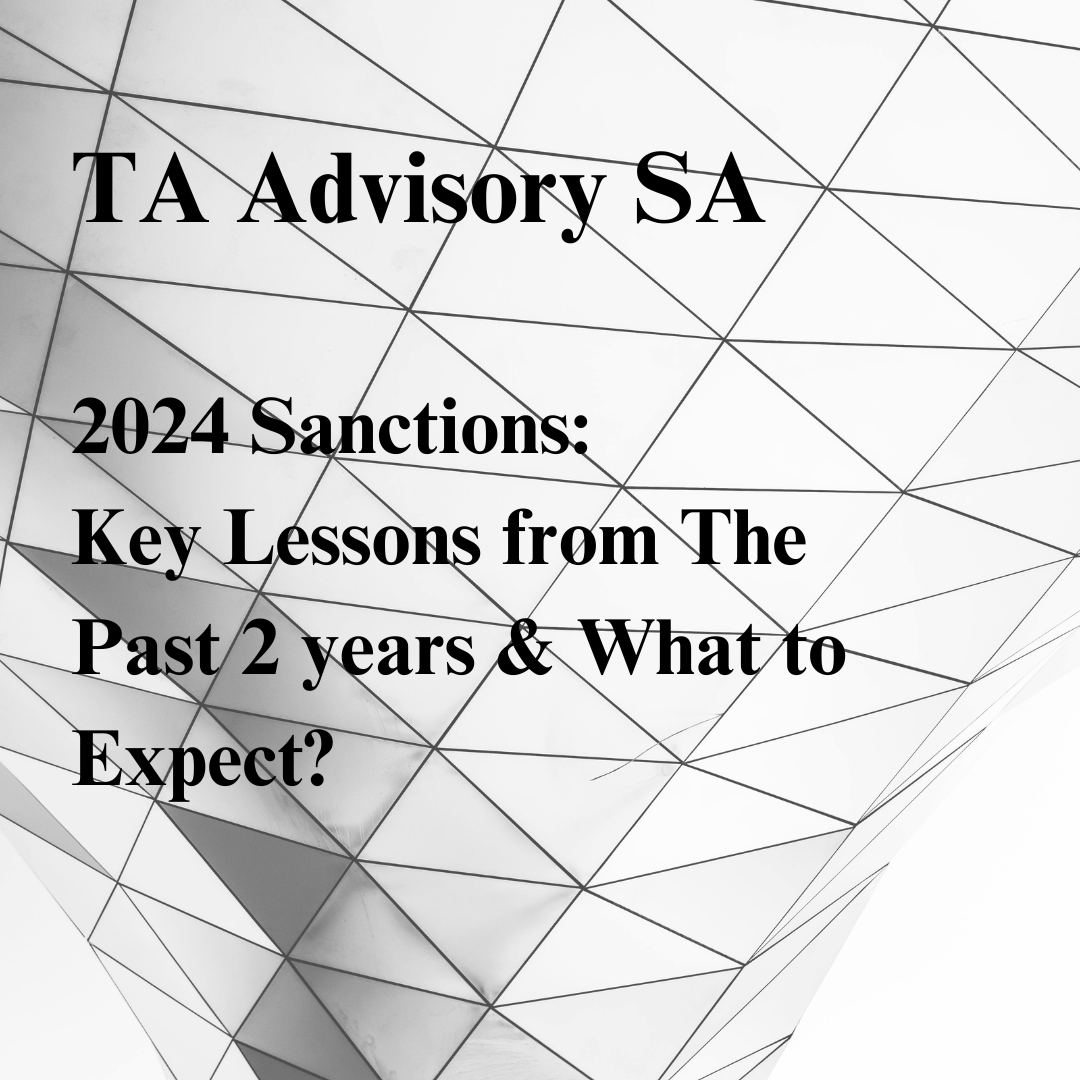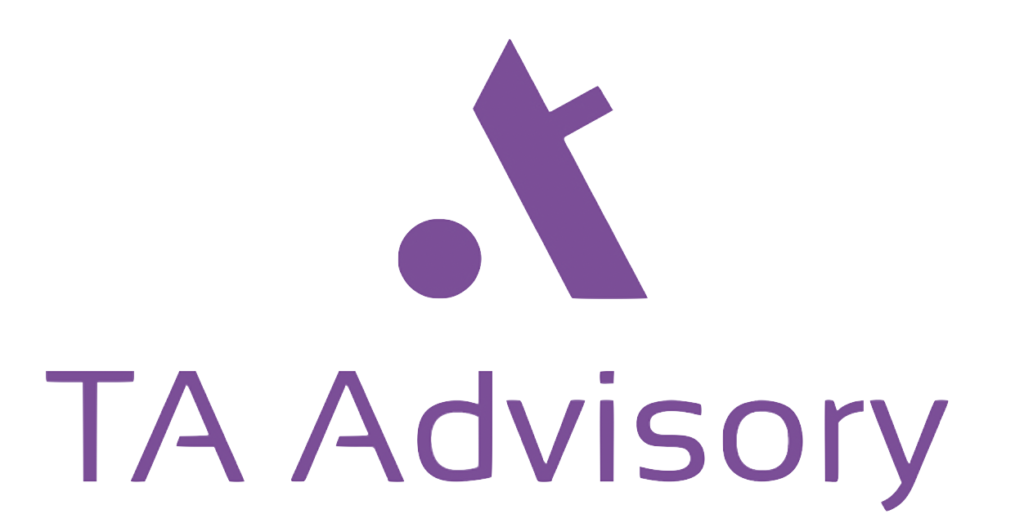1. Introduction
During the conference, a brief reminder of the useful documents for analysing sanctions was first made (notably because Switzerland adapts its sanctions according to what the European Union does):
- Regarding the Trade restrictions: Council Regulation (EU) No 833/2014 of July 31, 2014 concerning restrictive measures in view of Russia’s actions destabilising the situation in Ukraine (“Regulation No. 833/2014“).
- Regarding the Financial restrictions: Council Regulation (EU) No 269/2014 of March 17, 2014 concerning restrictive measures in respect of actions undermining or threatening the territorial integrity, sovereignty and independence of Ukraine (“Regulation No. 269/2014”).
- For clarification regarding the sanctions: Commission Consolidated FAQs on the implementation of Council Regulation No 833/2014 and Council Regulation No 269/2014 (last update: February 22, 2024)(“EU FAQs”).
- Council of the European Union – Restrictive measures (Sanctions) – Update of the EU Best Practices for the effective implementation of restrictive measures (“EU Best Practices”).
See also here for the English and French version.
The Best Practices are to be considered non exhaustive recommendations of a general nature for effective implementation of restrictive measures in accordance with applicable Union law and national legislation. They are not legally binding and should not be read as recommending any action which would be incompatible with applicable Union or national laws, including those concerning data protection.
2. Some of the highlights of the conference
- The importance of US Sanctions results in an applicability of the US sanctions outside of the territory of the USA (the famous secondary sanctions). As a result, a bank could be excluded from the US dollar if it does not respect US sanctions, which would in this case impact all its accounts in US dollars.
- As a result, banks are increasingly demanding that their clients provide them with authorisations not only from SECO, for operations taking place in Switzerland, but also from other authorities responsible for sanctions, such as the US and European authorities responsible for enforcing sanctions.
- one of the biggest issues concerns the question of the Ownership/Control and to determine if an entity is owned or controlled by a sanctioned person or not.
- These concepts are not applied uniformly by the various authorities responsible for applying sanctions, as different thresholds are applied for example.
- The Swiss Ordinance does not explain in detail the terms of Ownership and control. Therefore, Swiss authorities tend to apply the more developed European criteria.
- Switzerland also has no specific and detailed clause on the circumvention of Swiss sanctions.
- With regard to the United States and the need to prevent circumvention of US sanctions, during investigations by the US authorities, the compliance programmes put in place by entities, particularly banks, are subject to particular attention and scrutiny, in order to verify that the entity’s/bank’s ability to respond to these sanctions issues is indeed capable of preventing a breach of the sanctions regimes.
- The banks have to consider the applications of trade sanctions in their activities. In addition, there is a need to take into consideration the ancillary services as well as the obligation to inform MROS.
- The US authorities have highlighted certain techniques used by certain “Russian actors” to circumvent the sanctions regime, in particular the use of certain countries that do not apply sanctions against Russia.
- New restrictions will continue to be introduced by the various governments in the future and will probably become increasingly complex.
- The EU authorities are beginning to “Americanise” and are now focusing on the circumvention of sanctions, as evidenced by the 11th, 12th and 13th packages and the extraterritorial application of their sanctions regimes.
- This is already shown by the increase of extraterritorial application of the EU sanction law.
- While all this is happening, all the stakeholders are waiting for the first judicial decisions to be rendered, with the inevitable risk of contradiction.
- In the course of their investigations, the authorities, particularly the US authorities, will take a closer look at the compliance programmes put in place by the banks in order to determine the bank’s ability to respond to questions relating to the sanctions.
- In Switzerland, it could be useful to consider a general clause prohibiting the circumvention of sanctions in order to provide legal certainty.
- Switzerland’s neutrality will be called into question by this “Americanisation”, particularly with regard to the principle of territoriality of Swiss sanctions.
3. Ownership and Controll
- The financial institution (as well as all the other concerned stakeholders) should be mindful of the fact that the “ownership and/or control” rules vary between the major sanctioning jurisdictions and their application can lead to, at times, inconsistent and counter-intuitive outcomes.
- The complexity lies in the definition of the term “control”. Sometimes the authorities have difficulty in applying the control criterion because of all the possibilities offered by this criterion, which creates legal and regulatory uncertainties.
The Ownership criterion and its issues could be summarised as follow :
- Under US law, there is the threshold of “50% of ownership” triggers the application of US sanctions.
- Under EU law, the ownership of more than 50% triggers the application of UE sanctions.
- Under Swiss law, Art. 15 (1)(c) Ordinance is the legal basis regarding the ownership criteria. However the concept of ownership is not clearly defined by this legal basis. Consequently, the interpretation of ownership under Swiss law follows the interpration of ownership under EU law.
- Moreover, the 12th sanctions package has introduced the following:
- A new criterion for inclusion on the list has been added with this sanction package. The aim is to include people who benefit from the forced transfer of ownership/control of Russian subsidiaries of EU companies.
- In addition, the issue of assets of deceased persons has resulted in the introduction of the possibility of keeping deceased persons on the assets freeze list to prevent the return of certain assets to the Russian Federation.
Switzerland will adopt and follow the European approach to detect circumvention mechanisms.
The Control criterion could be summarised as follow :
- Under US law, there is no specific rules. However, the OFAC has a great power of investigation. It may, for example, designate these types of entities pursuant to statutes or executive orders that empower OFAC to do so.
- Under EU law, there is not a numerus clausus type of definition of the “control” criterion. However EU law mentions as examples some criteria that could trigger the EU sanctions when assessing whether a legal person or entity is controlled by another person or entity. This criteria could include, inter alia:
- having the right or exercising the power to appoint or remove a majority of the members of the administrative, management or supervisory bodies of a legal person or entity who have held office during the present and previous financial year;
- having appointed solely as a result of the exercise of one’s voting rights a majority of the members of the administrative, management or supervisory bodies of a legal person or entity
- controlling alone, pursuant to an agreement with other shareholders in or members of a legal person or entity, a majority of shareholders’ or members’ voting rights in that legal person or entity;
- having the right to exercise a dominant influence over a legal person or entity, pursuant to an agreement entered into with that legal person or entity, or to a provision in its Memorandum or Articles of Association, where the law governing that legal person or entity permits its being subject to such agreement or provision;
- having the power to exercise the right to exercise a dominant influence referred to in point, without being the holder of that right;
- having the right to use all or part of the assets of a legal person or entity;
- managing the business of a legal person or entity on a unified basis, while publishing consolidated accounts;
- sharing jointly and severally the financial liabilities of a legal person or entity, or guaranteeing them.”
For in-depth explanations:
1) Under United States Law
a) Ownership under US Law
The US equivalent of our SECO, the Office of Foreign Assets Control (“OFAC”), has issued guidance on 14 February 2008, completed then on 13 August 2014 with a second guidance, regarding the ownership criterion.
As part of its enforcement efforts, OFAC publishes a list of individuals and companies owned or controlled by, or acting for or on behalf of, targeted countries. It also lists individuals, groups, and entities, such as terrorists and narcotics traffickers designated under programs that are not country-specific. Collectively, such individuals and companies are called “Specially Designated Nationals” or “SDNs.” Their assets are blocked and U.S. persons are generally prohibited from dealing with them.
According to it, any property or interests in property of an identity are blocked if the entity is 50 per cent or more owned, directly or indirectly, by a designated person. This is known as the 50 Percent Rule.
Designated persons are considered to have an interest in all property and interests in property of an entity in which the designated person owns, whether individually or in the aggregate, directly or indirectly, a 50 per cent or greater interest. The significance of this is that any entity directly or indirectly owned individually or in the aggregate 50 per cent or more by one or more designated persons is itself considered designated. This is the case whether or not the designated entity is actually placed on the SDN List.
Because OFAC applies the 50 Percent Rule to entities owned indirectly by a designated person, the Rule has a cascading effect of designation and may reach entities several levels removed from the designated person. For instance, if designated Person A owns in aggregate 50 per cent or more of Company X, Company X owns in aggregate 50 per cent or more of Company Y and Company Y owns in aggregate 50 per cent or more of Company Z, companies X, Y and Z are each considered designated by virtue of Person A’s indirect ownership of each.
Therefore, if a SDN owns 50% or more of a company, which then itself is the owner of others subsidiaries, all the subsidiaries are considered as designated persons as the SDN himself.
b) Control under US Law
GIR, The Guide to sanctions, 4th edition 2023, p. 121:
As for entities that are controlled but not 50 per cent owned by an SDN, the analysis is more complicated; if an SDN controls another entity, that entity is not presumptively an SDN according to the 50 Percent Rule.
Rather, OFAC cautions that it may designate these types of entities pursuant to statutes or executive orders that empower OFAC to do so for entities over which a blocked persons exercises control. OFAC further cautions that SDN- controlled entities may be the subject of future OFAC enforcement actions, and advises that persons exercise caution when dealing with non-blocked persons who are controlled by blocked persons.
Caution doesn’t mean automatically a blockage. However, no more information were given under this criterion, for the US law.
2) Under EU Law
a) Ownership under EU Law
The criterion to be taken into account when assessing whether a legal person or entity is owned by another person or entity is the possession of more than 50% of the proprietary rights of an entity or having majority interest in it. If this criterion is satisfied, there is a presumption the legal person or entity is owned by another person or entity (see notably footnote 8 of the EU Best Practices, para. 62, 63 and Art. 1(5) of Regulation EU 2580/2001 of 27 December 2001 on specific restrictive measures directed against certain persons and entities with a view to combating terrorism).
The 12th package update introduced a new listing criteria. “The Council has agreed a new listing criterion to include persons who benefit from the forced transfer of ownership or control over Russian subsidiaries of EU companies. This will ensure that no one profits from the losses that EU companies face when their subsidiaries are forcibly acquired by Russian owners/management.”
Article 3(1)(j) of Regulation No. 269/2014 (new listing criterion):
Annex I shall include: […]
entities established in Russia, previously owned or controlled by entities established in the Union, ownership or control of which has been compulsorily transferred by the Government of the Russian Federation through laws, regulations, other legislative instruments or other action of a Russian public authority, or natural or legal persons, entities or bodies that have benefitted from such a transfer, and natural persons who have been appointed to the governing bodies of such entities in Russia without the consent of the Union entities which previously owned or controlled them, […].
Article 3(1a) of Regulation No. 269/2014 (deceased person) (emphasis added):
If natural persons listed in Annex I die during the period of application of the restrictive measures, the Council may retain the names of the deceased persons on that list if their delisting would pose a risk of undermining the objectives of Union restrictive measures because of a likelihood that the assets concerned would otherwise be used to finance Russia’s war of aggression against Ukraine or other actions undermining or threatening the territorial integrity, sovereignty and independence of Ukraine.
b) Control under EU Law
Restrictive measures (sanctions) – Update of the EU Best Practices for the effective implementation of restrictive measures of June 27, 2022.
Para. 63 on Control mentions the following:“The criteria to be taken into account when assessing whether a legal person or entity is controlled by another person or entity, alone or pursuant to an agreement with another shareholder or other third party, could include, inter alia:
a. having the right or exercising the power to appoint or remove a majority of the members of the administrative, management or supervisory bodies of a legal person or entity who have held office during the present and previous financial year;
b. having appointed solely as a result of the exercise of one’s voting rights a majority of the members of the administrative, management or supervisory bodies of a legal person or entity who have held office during the present and previous financial year;
c. controlling alone, pursuant to an agreement with other shareholders in or members of a legal person or entity, a majority of shareholders’ or members’ voting rights in that legal person or entity;
d. having the right to exercise a dominant influence over a legal person or entity, pursuant to an agreement entered into with that legal person or entity, or to a provision in its Memorandum or Articles of Association, where the law governing that legal person or entity permits its being subject to such agreement or provision;
e. having the power to exercise the right to exercise a dominant influence referred to in point (d), without being the holder of that right;
f. having the right to use all or part of the assets of a legal person or entity;
g. managing the business of a legal person or entity on a unified basis, while publishing consolidated accounts;
h. sharing jointly and severally the financial liabilities of a legal person or entity, or guaranteeing them.
The 12th package of sanctions introduced a requirement of a proactively Tracing of Assets, via Art. 8(1d) of Reg. 269/2014 which stipulates the following: “Member States shall designate by 31 October 2024 the national authorities competent to identify and trace, where appropriate, the funds and economic resources belonging to, or owned, held or controlled by, any natural or legal persons, entities or bodies listed in Annex I and that are located in their jurisdiction, with a view to preventing or detecting instances of a breach or circumvention, or attempts at a breach or circumvention, of the prohibitions set out in this Regulation”.
The key here is to really understand that enforcement is big in the menu of EU authorities. The members state have to identify the funds, for them it’s more than administration, it’s investigation from their SECO-equivalent authorities.
This could have a big impact on Switzerland if it decides to adopt that approach as well.
3) Under Englisch Law
Ownership & Control under English Law
- “Section 62 of SAMLA [Sanctions and Anti-Money Laundering Act of 2018] permits specific definitions to be inserted into each sanctions regulation on ownership and control. SAMLA itself does not provide a definition for ownership and control. […] A company is owned or controlled directly or indirectly by another person if either or both of the following two conditions is met:
- The person holds directly or indirectly more than 50 per cent of the shares or voting rights in the company, or the right, directly or indirectly, to appoint or remove a majority of the board of its directors; or
- It is reasonable to expect that the person would ‘(if [the person] chose to) be able, in most cases or in significant respects, by whatever means and, whether directly or indirectly, to achieve the result that affairs of [the company] are conducted in accordance with [the person’s ] wishes’.”. The control criterion could be associated to this definition.
4) Under Swiss Law
Art. 15(1)(c) of the Ordinance:
Assets and economic resources owned or controlled, directly or indirectly, are frozen:
[…]
c. companies and entities owned or controlled by natural persons, companies or entities referred to in let. a or b.
In this context, the interpretation of Swiss law follows that of EU law. See Guidance in interpreting sanctions of 1 February 2024 (unofficial translation): “The Swiss authorities endeavor to ensure that the implementation of sanctions is as close as possible to the practice applied in the EU, and are in contact with the relevant EU services. […]”
Switzerland has explained that it will follow EU legislation. It is therefore endeavouring to be as close as possible to what the EU does (which is easier said than done, as there are 27 countries with their own understanding and practice of EU sanctions and their application).
4. Sanctions evasion
The authorities have reacted to the issue of “Facilitating” (synonyms are “Evading” and “Circumventing”) of sanctions.
- The large number of sanctions has created opportunities for some to circumvent them. The number of sanctions creates grey areas which are then used by certain companies or individuals, particularly in the context of Russia and the intensity of trade relations with the latter before February 2022.
- For example, one way of circumventing the sanctions is to trade via certain republics of the former USSR instead of directly via the Russian Federation.
- Under US law, the cicumvention/facilitation criterion offers the possibility to cover US persons and non-US persons (via primary and secondary sanctions respectively) by US sanctions.
- Under EU law, Art. 12 of Council Regulation No. 833/2014 covers the concept of circumvention.
- Swiss law does not develop the concept of circumvention, either in the Ordinance or in the law on embargoes. As these Acts offer no specific explanation, it is necessary to apply EU law.
The Various Circumvention techniques:
- REPO task force (for “Russian Elites, Proxies and Oligarchs”) is a task force established between many countries, of which Switzerland is a member. The tsk force reviewed the elements related to cases of circumvention and has identified the typology of circumventions:
- the use of family members and close associates to ensure continued access and control.
- the use of real estate to hold value, benefit from wealth.
- the use of complex ownership structures to avoid identification.
- the use of enables to avoid involvement, leverage expertise etc.
- the use of 3rd party jurisdictions, false trade information to facilitate sensitive goods shipment to Russia.
- Concrete examples were cited, including Transkapitalbank (TKB), Russian oligarch Konstantin Malofeyev, OFAC targeting the virtual currency mining industry in Russia, and exports via former USSR republics such as Azerbaijan and Kyrgyzstan.
Due diligence pointers:
There is a compliance framework for the OFAC. Banks are required to develop, implement and regularly update their sanctions compliance programmes. Compliance programmes enable the US authorities to verify whether or not the points below have been complied with. OFAC will check whether a compliance programme exists, for example, as part of the investigation into a bank.
- 5 essential components of a sanctions compliance programme:
(i) management commitment,
(ii) risk assessment,
(iii) internal controls,
(iv) tests and audits, and
(v) training.
- Recommendations by the REPO Task Force:
- Assessment of the beneficial ownership of a business partner is a due diligence obligation. There is no single due diligence model. It may depend on the specifics of the business and the resulting risk exposure. It’s up to each operator to develop, implement and regularly update an EU sanctions compliance program that takes into account its business model, geographical and sectoral areas of activity and the resulting risk assessment. These sanctions compliance programmes can help to detect transactions which are red flags and which may be indicative of a pattern of circumvention.
- Compliance with trade-related sanctions is not limited to the banks processing the corresponding payments, but is also the responsibility of the operators behind such trade (e.g., exporters, brokers…).
5. Trade Sanctions & ancillary financial services
- The trade sanctions ( for example Art. 2a et ses of the Swiss Ordinance) include territorial restriction (Art. 13 and 14 of the Ordinance) where “nothing can come in and nothing can go out” perspective.
- Financial restriction are notably mentioned at Art. 15 et seq. of the Ordinance
- There is also other restrictions, notably entry and transit bans, Air traffic, etc.
- Under EU Law, the Regulation No. 833/2014 concerns the Trade restrictions.
- There has been some new packages of sanctions covering notably the ban on dual use good (used in civil and military capacity without any change) and the export ban of electronic components and precursors to chemical weapons.
- Two factors that banks need to take into account when dealing with commercial restrictions: (i) ancillary services; and (2) duty to report.
- Trade restrictions include a ban on the provision of ancillary services, including financial services.
- The Swiss law does not define the notion of financial services (see Art. 1 a contrario). However, the EU law defines it notably at Art. 1(o) of Council Regulation No. 833/2014 and the EU FAQs (p. 124-125 and p. 167).
- The ancillary Services are mentioned notably in EU FAQs (p. 185 and 217). The judgment (C-72/15) of 28 March 2017 gave some elements regarding the concept/idea of financial assistance and what it requires (notably the issuer would need to commit some of its ressources in order to be eventually punished).
- The contravention to the Swiss Ordinance is punished by Art. 9 and 10 of the Embargo Act.
- Another point is the duty to report. Indeed, the need to report to the SECO does not end the obligation to report suspicious cases to MROS.
- This duty to report in case of reasonable suspicion to MROS is covered by the Anti Money Laundering Act (AMLA, notably Art. 6 and 9)
- There are due diligence obligations to clarify economic background and purpose of a transaction (art. 6(1) and (2) AMLA) and to report to MROS (art. 9 AMLA).
- US authorities highlighted two techniques used by some Russian actors to continue obtaining the now-prohibited items: (i) use of intermediaries; and (2) transshipment.
- Indeed, certain countries (for example: Armenia, Brazil, China) are used to circumvent sanctions. Some goods could be for example send to these countries first (where the final destinations remain Russia or Belarus).
Sanctions
Against the backdrop of recent international developments, particularly those related to Ukraine and Russia, complex economic sanctions and new rules governing relations with sanctioned countries and their citizens continue to evolve. Asset freezes, commercial bans, airspace closures, and individuals falling under personal sanctions are all changing rapidly in response to foreign policy developments.






